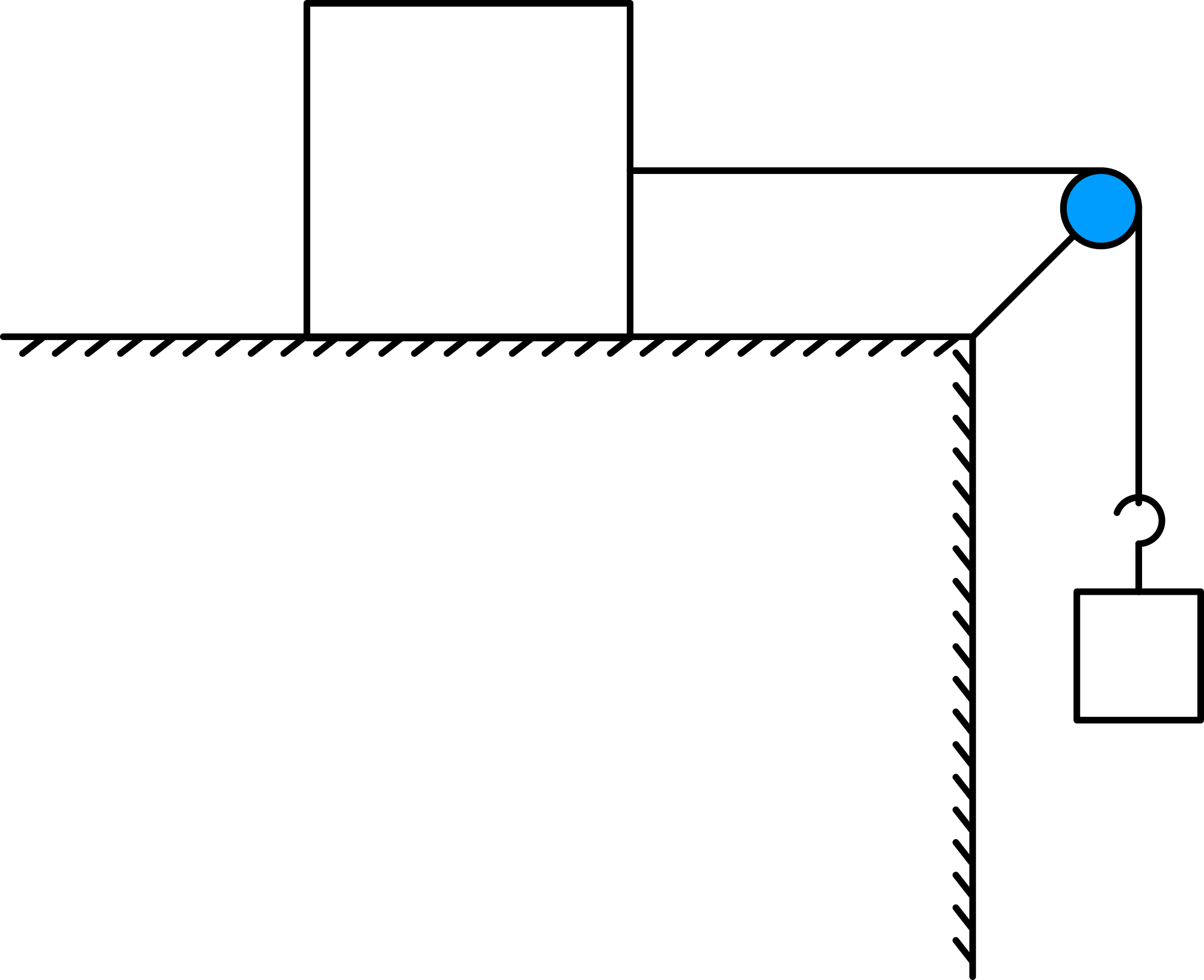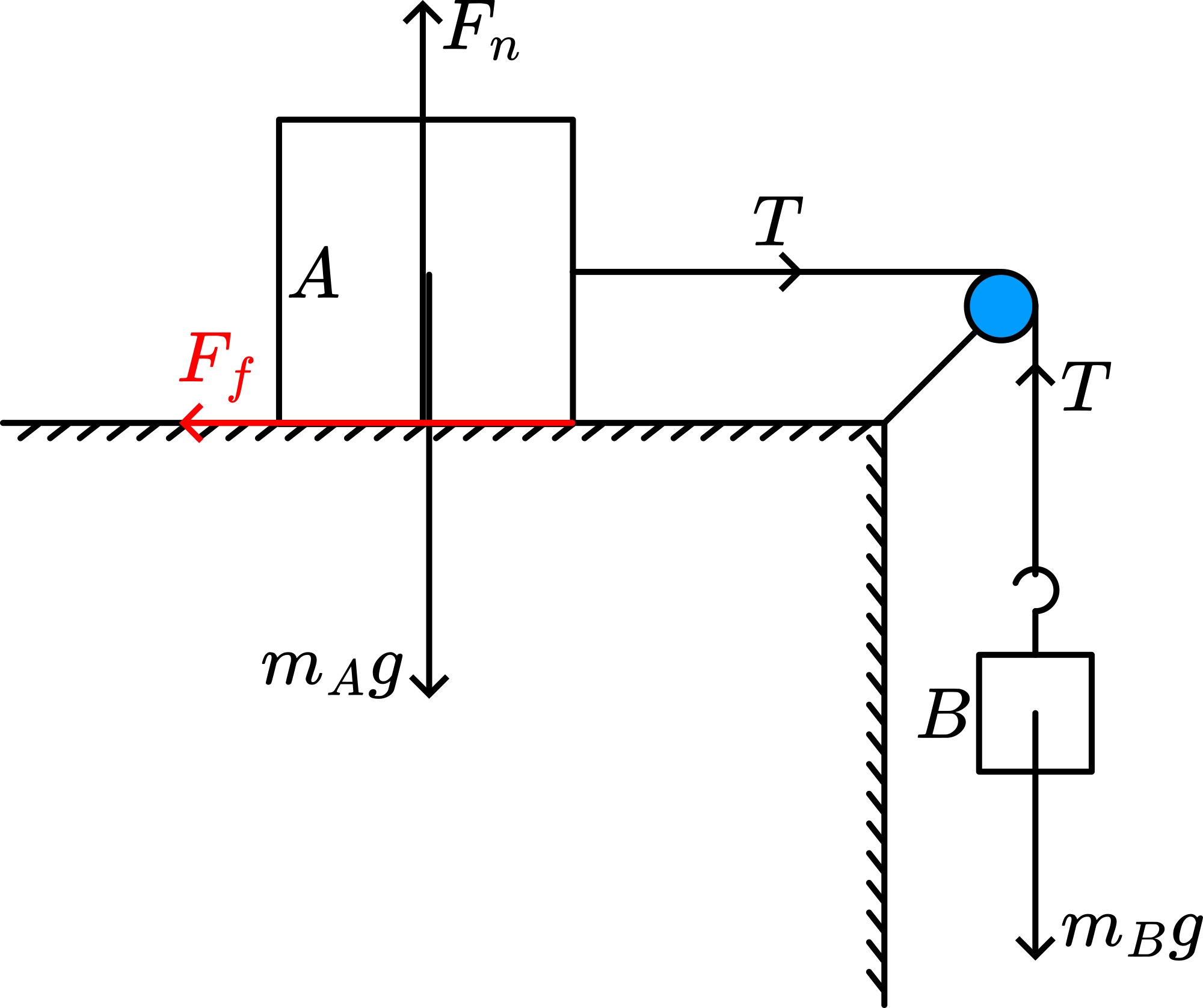09 Pulling a Sliding Block#
Aim#
Showing the difference between static and kinetic friction
Subjects#
1K20 (Friction)
Diagram#

Fig. 125 .#
Equipment#
Wooden block
Pulley
String
Slotted masses
Presentation#
The slotted mass is made so heavy that the block just doesn’t move. Then you give a smash on the table and the block will start sliding and keep on sliding.
Explanation#
When the block just doesn’t move, it means that \(F_{f}\) is almost equal to \(F_{f, \max }=\mu_{\text {stat }} F_{n}\) (see Figure 126).

Fig. 126 .#
A smash on the table means that the block is released from the table for a short moment (at least temporarily \(F_{n}\) will be much smaller than \(m_{A} g\) ) so A and B start moving. Since \(A\) and \(B\) continue to move, it means that \(\mu_{k i n} F_{n}\left(=m_{B} g\right)\) is lower than \(\mu_{\text {stat }} F_{n}\).
Remarks#
The ring for fixing the string can be moved vertically in order to maintain the pulling string horizontal when the block is moving.
A wetted bottom of the block makes this demonstration somewhat easier.
Sources#
Roest, R., Inleiding Mechanica, pag. 63
